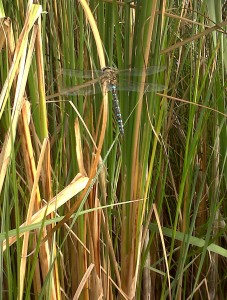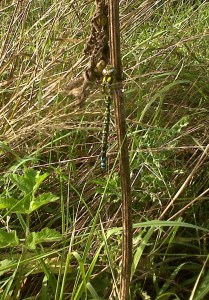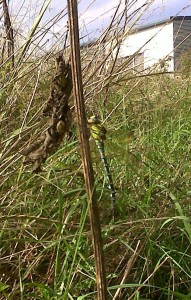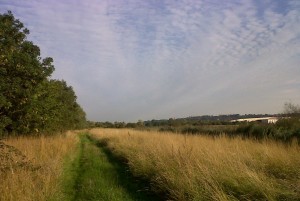I counted some 40 to 44 Migrant Hawker dragonflies (Aeshna mixta) on the southern part of Erith Marshes yesterday afternoon (September 11th) , largely feeding along tall ‘hedge lines’ of Poplars and other tree species. This is an easy species to pick out even on the wing, due to its relatively late flight period, willingness to associate non-aggressively with others of its kind and the somewhat green thorax sides contrasting with the bluer back end.
Once upon a time it was a migrant, but is now a resident insect. Large feeding swarms are said to be an occasional sight, and there was a loose cluster of 17 between the southern extension of Great Breach Dyke and the bund leading up to industrial units on Alder Close. Groups of 7 and 9 were also seen.

Migrant Hawker. Yellow ‘golf-tee’-shaped mark at top of abdomen is diagnostic. The species looks quite a small Dragonfly when in the air, but rather more substantial when grounded. (Photo: Chris Rose).
A single Southern Hawker (Aeshna cyanea) was also spotted and photographed near Alder Close, taking Crossness / Erith Marshes to a confirmed 15 species of Odonata, level with previous leader Footscray Meadows, though it should be noted that there has been no sign of Emerald Damselfly at the marshes site recently.

Male Southern Hawker on the bund adjacent to the southern part of Great Breach Dyke. Note the large green antehumeral stripes behind the eyes, and the fact that the colour at the end of the abdomen is in two solid crossbands, rather than further paired spots. (Photo: Chris Rose)

Side view of the Southern Hawker showing the very broad apple green bands on the side of the thorax. (Photo: Chris Rose)
A solitary Common Darter was also seen.
Chris Rose

